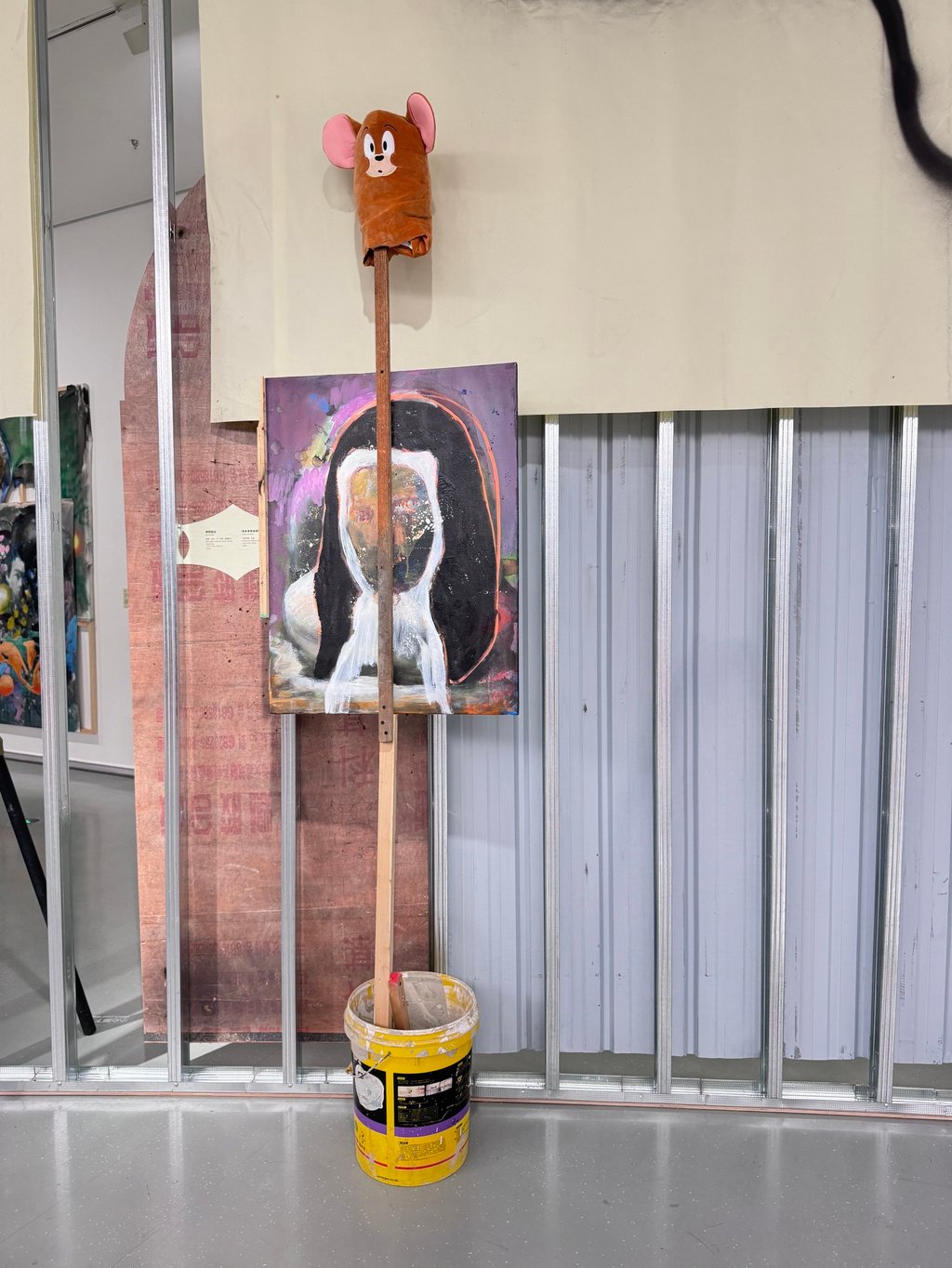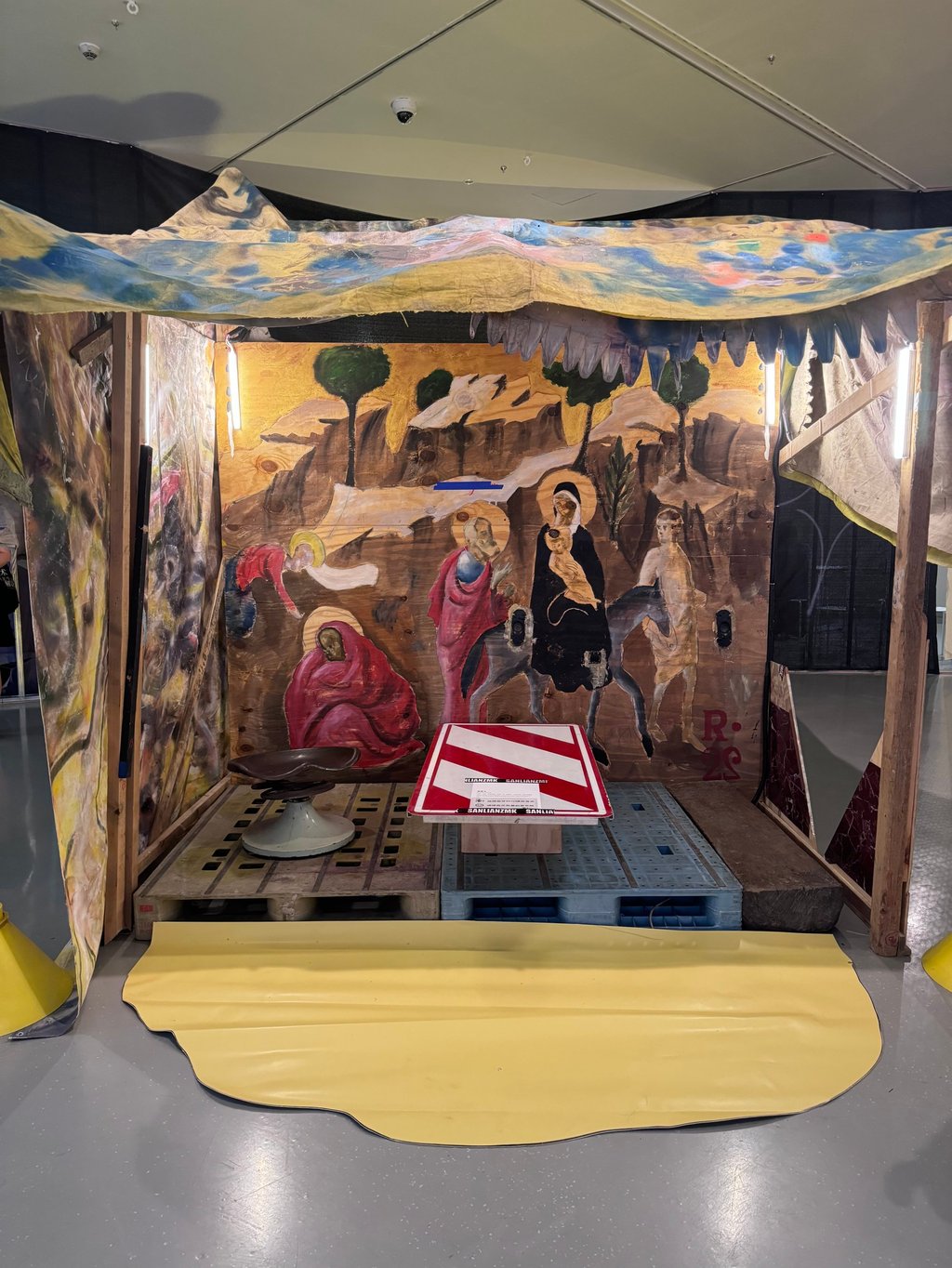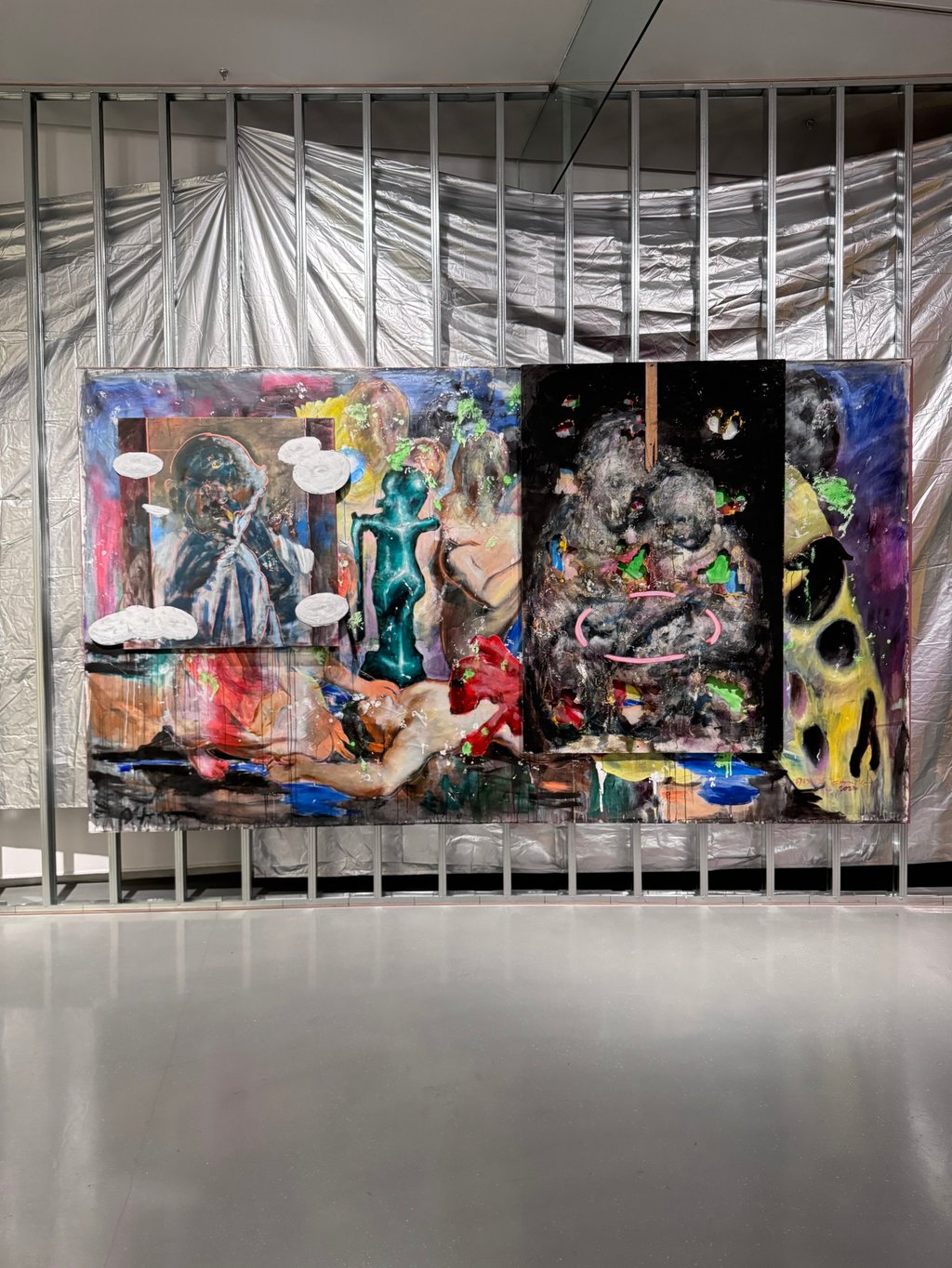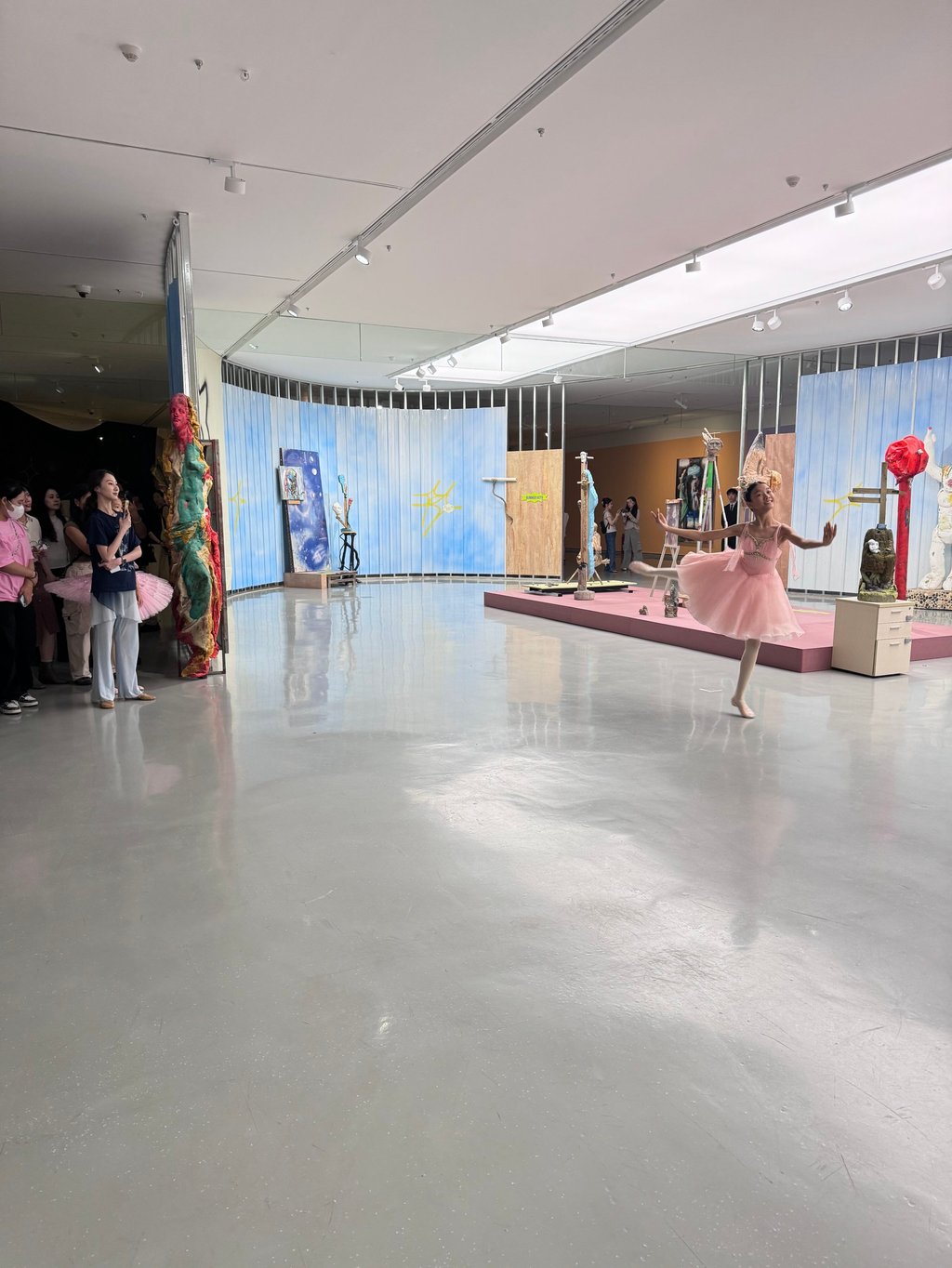Zhou had never been to Latin America, so when the show’s organizer asked him to explain his art to the audience, he decided to just be creative in his answer.

His invented story can be seen as a nod to the tendency to expect a simple answer to the question of why artists do what they do, when in reality few things are so simple – and his chaotic exhibition is even less so.

The works of the heavily tattooed 41-year-old Zhou are grouped around stands made of wooden boxes and decorated with murals that take up biblical motifs – and seem to mock the idea of the sacred, the heroic and high art.
For example, a plastic washtub was transformed into a totem pole, a grotesque head was adorned with sunglasses and a green wig, and an abstract painting of a human head was interrupted by a wooden pole – which in turn was decorated with a doll named Jerry from the Tom and Jerry Animated series.
The opening day of the exhibition also featured an unexpected performance – the air was filled with classical music as three young ballerinas began dancing in the center of the gallery.
Zhou said the performance was another spontaneous brainwave. While setting up the exhibition at the art center, he noticed that there was a ballet school on the upper floor.
Growing up in the 1980s and 1990s, the artist witnessed China’s dramatic transformation from a closed, insular society to a global economic power. The complexity of this rapid transformation is reflected in Zhou’s artistic approach.
He avoids a recognizable style that most artists strive for and even nails his paintings on top of each other without regard for the damage he causes.
Zhou’s quasi-religious murals are juxtaposed with paintings on Chinese paper scrolls, some of which have been deliberately damaged or defaced, and with wood reliefs of Taoist saints. The overall impression is one of prosaic eclecticism.
“(Parisian designer) Charlotte Perriand of (Studio) Le Corbusier designed numerous mobile houses and pieces of furniture, using local materials to keep costs down.
“Ironically, the items originally intended to satisfy basic needs became the most expensive items on the second-hand market after they were rediscovered by French collectors in the 2000s,” explains Zhou.
In the same way, his wooden structures made from reused materials become valuable when sold through a gallery, he adds.

Is the Bauhaus a real inspiration for him or is it just a story invented by Zhou? It remains uncertain – at least he admits that his practice is a little mo lei tau and uses dry humor to subtly criticize and undermine authority.
The exhibition of “Summer Huts” is part of a larger curatorial realignment of the SWCAC towards contemporary Chinese art, following the end of its collaboration with the V&A Museum in London.
“However, we felt increasingly disconnected from the Chinese art scene. After the collaboration ended, we realized that it was time to bring more contemporary Chinese art to Shenzhen.”

Zhang says the center welcomed four million visitors in 2023 and she expects that number to rise to six million this year.
She adds that the center is dedicated to hosting two solo exhibitions per year for established and emerging Chinese artists.
“Zhou Yilun: Summer Cottages”, Sea World Culture and Arts Centre, L2 Shenzhen UCCN Gallery, 1187 Wanghai Road, Nanshan District, Shenzhen. Monday-Friday, 10am-7pm, Saturday-Sunday, 10am-9pm. Until October 27.




